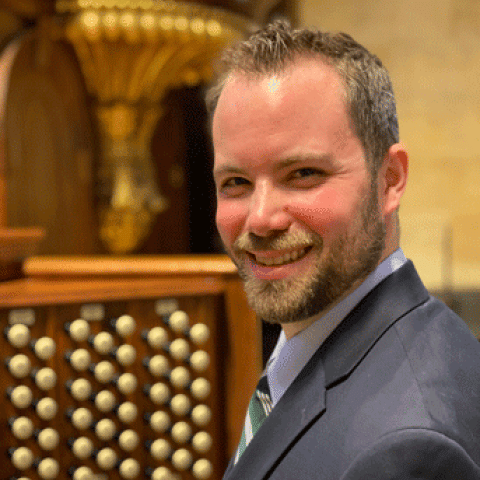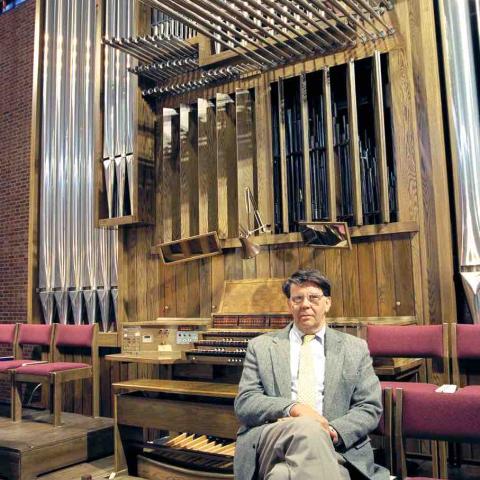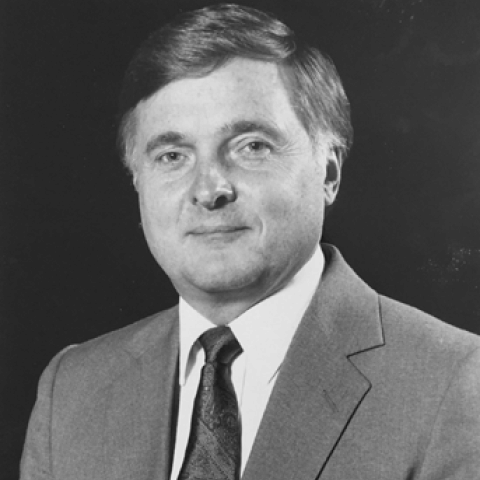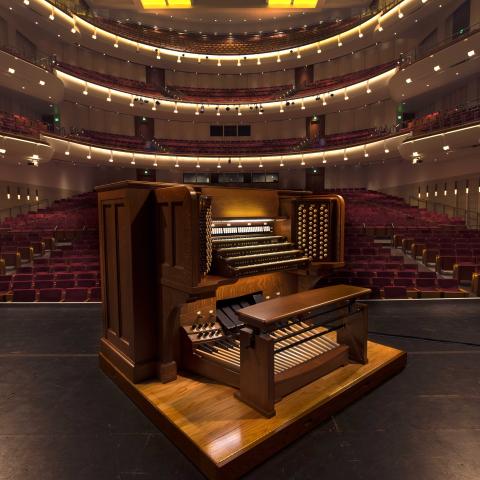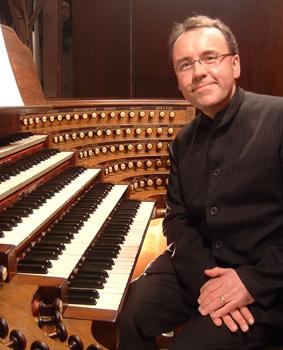
David Briggs is traveling to Minnesota for a week-long residency of performances, workshops and master classes in St. Paul, Northfield and St. Peter. These appearances mark his Minnesota debut.
The appearances are jointly sponsored by American Public Media’s Pipedreams, the Cathedral of Saint Paul, Saint Olaf and Gustavus Adolphus Colleges, and the Twin Cities and Sioux Trails Chapters of the American Guild of Organists.
Tuesday, April 2, 12:35 p.m. – Church of St. Louis, King of France, St. Paul
30-minute noontime mini-concert of mostly improvised music on the 57-rank Casavant organ; free
Tuesday, April 2, 7:30 p.m. – Cathedral of Saint Paul, St. Paul
Briggs presents his own spectacular solo-organ transcription of Gustav Mahler’s “Tragic” Symphony No. 6, featuring the Skinner and Aeolian-Skinner/Quimby pipe organs. Free/suggested $10 donation
Thursday, April 4, 8 p.m. – Boe Chapel, St. Olaf College, Northfield
Master class for students and auditors on the Holtkamp pipe organ; free
Friday, April 5, 9:15 p.m. – Boe Chapel, St. Olaf College, Northfield
Briggs improvises an accompaniment to the 1926 feature-length silent film action-adventure-comedy The General, starring Buster Keaton, while playing the Holtkamp pipe organ. Free
Monday, April 8, 6 p.m. – Christ Chapel, Gustavus Adolphus College, St. Peter
Master class for students and auditors, featuring the Hilgreen-Lane/Hendrickson pipe organ; free
Tuesday, April 9, 7:30 p.m. – Christ Chapel, Gustavus Adolphus College, St. Peter
Solo concert of repertoire and improvisations, part of the Gustavus Artist Series, played on the Hilgreen-Lane/Hendrickson pipe organ; ticket information
For more information: http://www.david-briggs.org/.
Phone: 800/228-7123
E-mail: mail@americanpublicmedia.org

